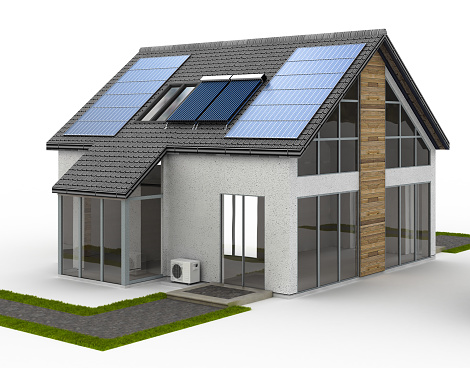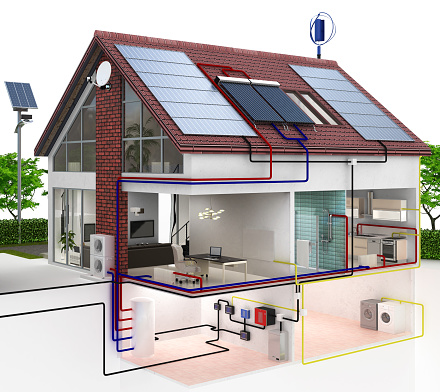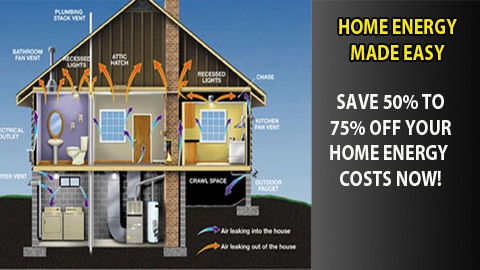
Solar heating systems are becoming increasingly popular as people look for ways to reduce their carbon footprint and save money on energy bills. These systems use the power of the sun to heat homes, businesses, and even swimming pools.
As a solar heating system expert, I have seen firsthand the benefits that these systems can provide. One of the main advantages of a solar heating system is that it uses renewable energy from the sun, which means it is both environmentally friendly and cost-effective in the long run. Once installed, there are no ongoing fuel costs or emissions to worry about.
Additionally, many governments offer incentives such as rebates or tax credits for those who choose to install solar heating systems. In this article, we will explore how solar heating systems work, their various applications, and what you need to consider before installing one in your home or business.
Harnessing The Power Of The Sun
As a solar heating system expert, I can attest to the immense power that harnessing the sun’s energy can provide. Solar heating systems are an incredibly efficient way of utilizing renewable energy and reducing our reliance on non-renewable sources such as oil or gas.
Solar panels work by capturing sunlight and converting it into thermal energy, which is then used to heat water or air for use in homes or buildings. This technology has come a long way since its inception, with advancements in materials science allowing for more efficient absorption and storage of solar energy.
Understanding how this works is essential to getting the most out of your solar heating system, so let’s explore the technology behind these amazing devices.
Understanding The Technology Behind Solar Heating Systems
Congratulations! You have harnessed the power of the sun and are now ready to dive into understanding the technology behind solar heating systems.
I know what you’re thinking, ‘Wow, this is going to be a thrilling read.’ But trust me when I say that getting familiar with the technical aspects of solar heating systems will give you an edge over those who skip out on it.
Let’s start with the basics – how do solar heating systems work?
The system consists of three main components: collectors, storage tanks, and controls.
These collectors absorb sunlight and convert it into heat energy which is then transferred to water or air in a storage tank for later use.
The controls regulate temperatures and ensure efficient use of energy.
Understanding how these parts work together can help you make informed decisions about your investment in solar heating systems.
Applications Of Solar Heating Systems

Solar heating systems have a wide range of applications, from residential to commercial buildings.
In homes and businesses, solar thermal collectors can be used for space heating or water heating purposes. This means that the system can provide warm air or hot water for different uses within the building.
In addition to these common applications, solar heating systems are also used in industrial processes such as drying agricultural products, preheating ventilation air, and even powering absorption chillers for cooling.
With advancements in technology and design, there are now countless ways to utilize solar energy for various needs beyond traditional residential or commercial uses.
Considerations Before Installing A Solar Heating System

As with any major home improvement project, installing a solar heating system requires careful consideration. This is not just about the cost and feasibility of installation but also your household’s energy needs and habits. To make an informed decision, it is crucial to weigh all the factors involved in this process.
One important factor to consider before installing a solar heating system is the availability of sunlight in your area. Without adequate sunlight exposure, you may not be able to maximize the benefits of such a system. Other considerations include roof pitch and orientation, shading from tall buildings or trees, as well as local zoning regulations that could affect the design and installation of your solar panels.
Here are some further points worth considering:
- The size of your household will determine how much hot water you need on average.
- Your current use of electricity or gas for heating should be taken into account when sizing up what type of solar panel array you’ll require.
- It is also essential to understand the maintenance requirements associated with owning a solar heating system: cleaning panels regularly and scheduling annual check-ups by professionals can significantly extend its lifespan.
By keeping these considerations in mind, homeowners can ensure their investment in a solar heating system suits their needs while reducing environmental impact over time.
Conclusion
In conclusion, a solar heating system is an excellent investment that can help you save money on energy bills while reducing your carbon footprint. As someone who has worked in the industry for years, I can tell you firsthand how incredible this technology truly is.
Let me be clear: installing a solar heating system is not only environmentally friendly, but it’s also incredibly cost-effective. With just a small initial investment, you’ll be able to harness the power of the sun and keep your home warm all winter long.
Trust me when I say that there’s nothing quite like feeling the warmth of the sun on your skin – except maybe experiencing it in your own home! So if you’re looking for a reliable and sustainable way to heat your property, look no further than a solar heating system.

